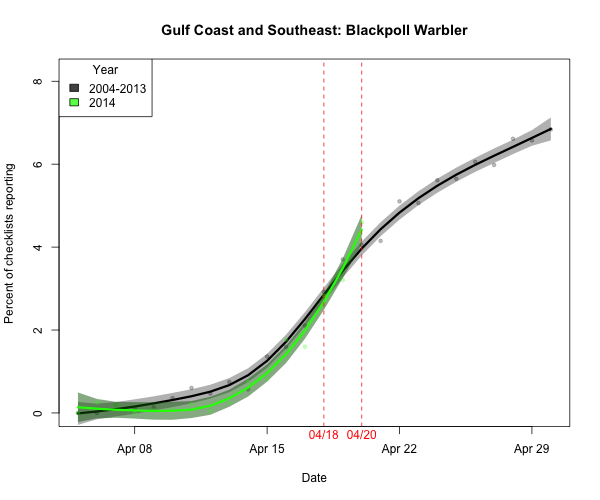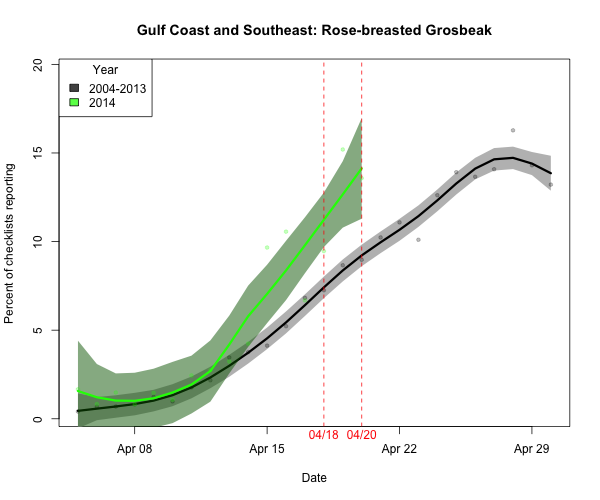This week we highlight species on the move over the past weekend in the Southeastern US, including a number reported in frequencies substantially in advance of the 2004-2013 average (like Swainson’s and Wood Thrushes, Black-throated Blue and Cape May Warblers, Rose-breasted Grosbeak, and Scarlet Tanagers). Of course, not all species are moving in advance of the average (for example, perhaps Yellow-billed Cuckoo and certainly Blackpoll Warbler). Are we seeing differences in arrivals that mirrors variation in the geography of winter distributions? It would not appear so, given the range of winter distributions represented among some of the seriously early arrivers in the figures that follow. Are we seeing the results of previous years’ successful early movers in continued advance of early arrival trends? Are we seeing something more complex, like the interplay of migration strategies (timing and route), weather conditions and anomalies en route, and winter behavior (e.g. does a species remain in a primary location or move widely across a range of locations)?













